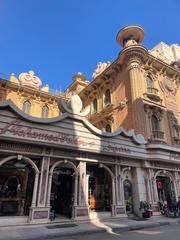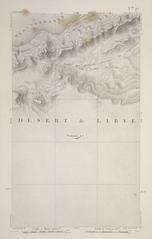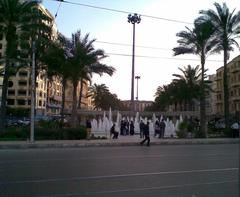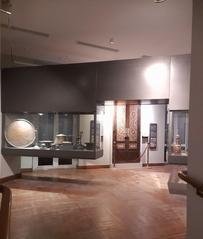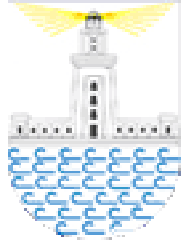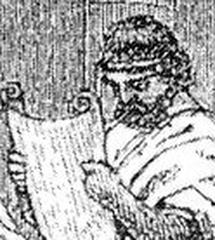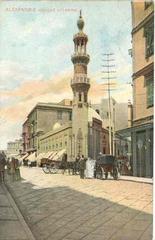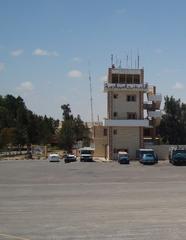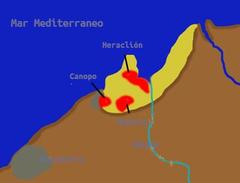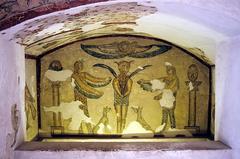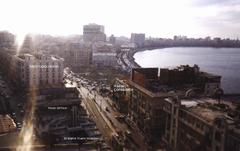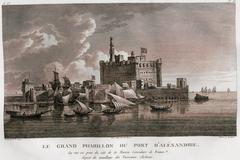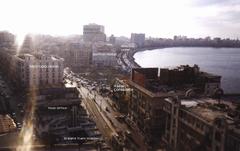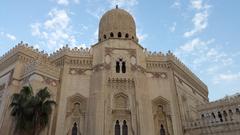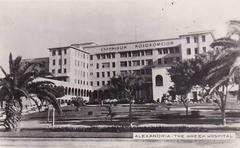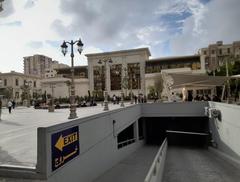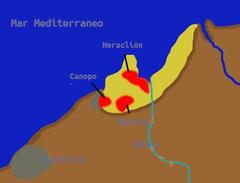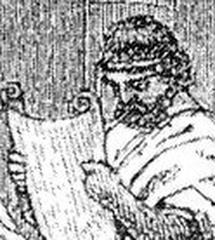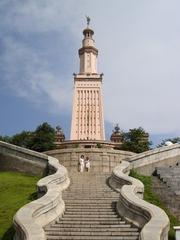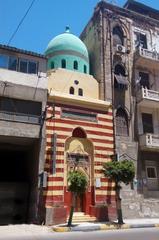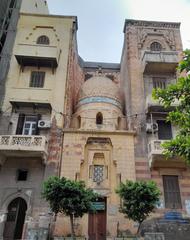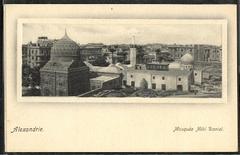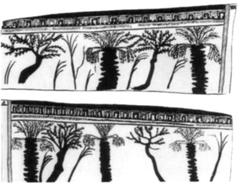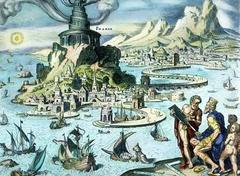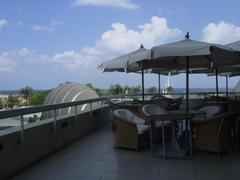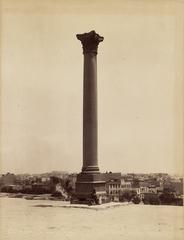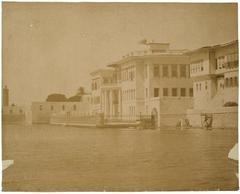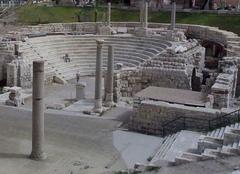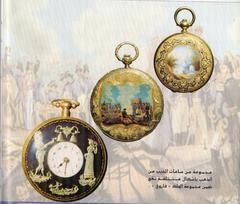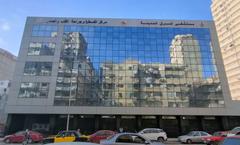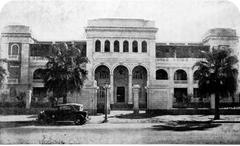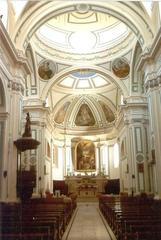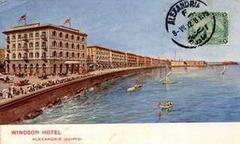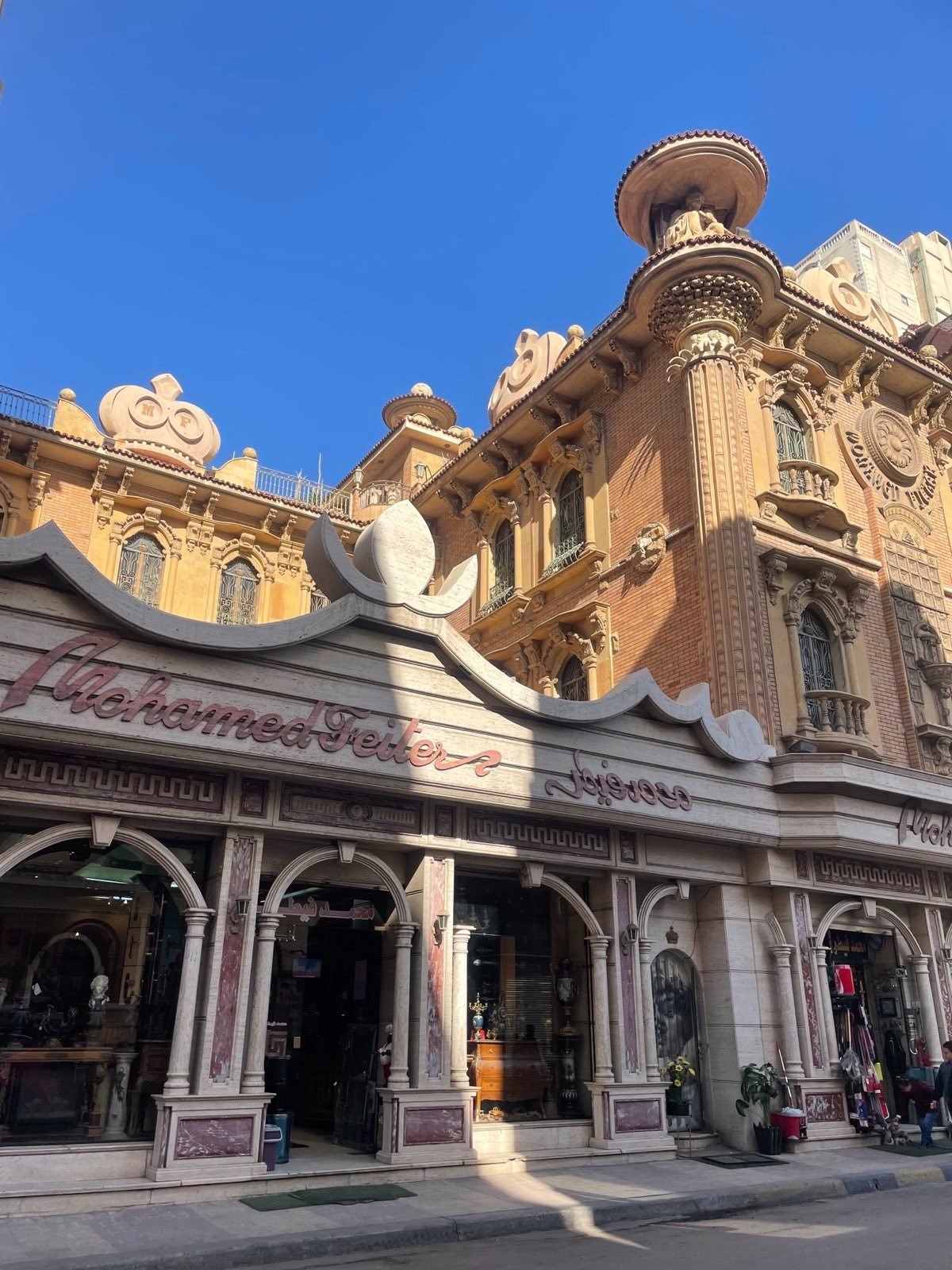
Mohammed Feiter Building Visiting Hours, Tickets, and Alexandria Historical Sites Guide
Date: 14/06/2025
Introduction
Alexandria, Egypt, founded in 331 BCE by Alexander the Great, is renowned for its unique blend of ancient heritage and modern dynamism. The Mohammed Feiter Building stands as a striking example of Alexandria’s cosmopolitan legacy, encapsulating the city’s multicultural past through its architectural elegance and social relevance. Situated in the heart of downtown, this early 20th-century landmark embodies Mediterranean influences, reflecting the contributions of Greek, Italian, Armenian, Jewish, and Levantine communities to Alexandria’s urban tapestry (egypttoursportal.com; academia.edu).
The building’s distinctive façade—characterized by ornate balconies, wrought-iron cornices, and decorative stonework—represents a synthesis of Neo-Classical, Italianate, and Art Deco styles. Inspired by Italian architecture and the iconic Harrods store in London, it has evolved from a Greek-owned residence to an Egyptian-owned antiques emporium, mirroring Alexandria’s shifting demographics and enduring multicultural spirit (Wikipedia; Suggestions4Egypt Blog).
This comprehensive guide provides essential information on visiting hours, ticketing, accessibility, and tips for exploring the Mohammed Feiter Building and its vibrant surroundings. Whether you’re an architecture enthusiast, history buff, or cultural traveler, this resource will help you plan a rewarding visit and appreciate Alexandria’s ongoing heritage preservation efforts (academia.edu; IJCH).
Table of Contents
- The Mohammed Feiter Building: A Historic Landmark
- Architectural Features and Influences
- Cultural and Urban Significance
- Practical Visitor Information
- Nearby Attractions and Itinerary Suggestions
- Adaptive Reuse and Preservation Efforts
- Frequently Asked Questions (FAQ)
- Conclusion and Resources
The Mohammed Feiter Building: A Historic Landmark
Historical Background
The Mohammed Feiter Building’s history is deeply intertwined with Alexandria’s cosmopolitan ascent. Originally constructed in the early 20th century as a residence for a Greek owner, it reflects the city’s status as a hub for Mediterranean migrants and entrepreneurs. Alexandria’s urban plan, designed by Dinocrates during the Hellenistic period, set the stage for centuries of architectural innovation (egypttoursportal.com; afktravel.com).
The building changed hands in 1965, when Mohammed Feiter, a former tenant, purchased it from its Greek owner. Feiter and his son undertook a major renovation, infusing the structure with Italian design motifs and decorative details sourced directly from Italy. This transformation aligned the building with Alexandria’s evolving social fabric, following the Egyptian Greek Exodus and the city’s broader demographic shifts (Wikipedia; Suggestions4Egypt Blog).
Architectural and Urban Evolution
The building’s façade is a testament to Alexandria’s multicultural influences, blending Italianate and Art Deco elements with local craftsmanship. Its symmetrical composition, stucco surfaces, ornate balconies, and prominent cornices exemplify the eclectic architectural styles popular among Alexandria’s cosmopolitan elite in the late 19th and early 20th centuries (academia.edu; HU.edu.eg).
Role of Fouad Street and Urban Context
Located on Istanbul Street near the intersection with Fouad Street (one of Alexandria’s oldest and most storied avenues), the Mohammed Feiter Building benefits from proximity to major landmarks like the Bibliotheca Alexandrina, Cavafy Museum, and Eliyahu Hanavi Synagogue. This central location places the building at the crossroads of Alexandria’s historical and contemporary urban life (Wanderlust Magazine; The Egyptian Traveler).
Architectural Features and Influences
The Mohammed Feiter Building is celebrated for its architectural harmony and attention to decorative detail:
- Façade: Features a central axis, pastel stucco, finely carved stone, and the initials “M. F.” as a tribute to its owner (Wikipedia).
- Balconies and Ironwork: Ornate wrought-iron balconies and balustrades offer both functional outdoor space and visual interest.
- Cornices and Pilasters: Prominent cornices and pilasters articulate the roofline and vertical divisions, echoing neoclassical traditions.
- Interior Spaces: Grand staircases, entrance halls with marble and mosaic tiles, and communal courtyards foster social interaction, typical of Mediterranean urban living (IJCH).
- Stylistic Blend: Elements of Moorish arches, Gothic tracery, and Art Deco motifs reflect Alexandria’s unique architectural synthesis (HU.edu.eg).
Cultural and Urban Significance
The Mohammed Feiter Building is more than an architectural landmark; it is a living symbol of Alexandria’s layered social fabric. Originally a residence for Greek families, it became an Egyptian-owned property following the mid-20th-century population shifts. Its designation as a protected monument—secured through the efforts of Feiter’s son—ensures its preservation for future generations (Suggestions4Egypt Blog).
The building’s transformation into an antiques shop, curated by the Feiter family, provides visitors with a unique cultural experience and an opportunity to engage with Alexandria’s history through artifacts and storytelling. The shop’s inventory reflects the city’s multicultural past, from European influences to local Egyptian craftsmanship.
Practical Visitor Information
Location and Accessibility
- Address: Istanbul Street, near Sultan Hussein and Nabi Daniel streets, downtown Alexandria (Suggestions4Egypt Blog).
- Coordinates: 31°11′54″N 29°54′03″E (Wikipedia).
- Getting There: The building is easily accessible via taxi or public transportation. Walking is recommended for exploring the historic district.
Visiting Hours and Tickets
- Opening Hours: 10:00 AM to 6:00 PM, Sunday through Thursday. Closed or with reduced hours on Fridays and public holidays.
- Admission: Free entry. Purchases in the antiques shop are optional.
- Accessibility: As a historic building, accessibility may be limited. Visitors with mobility needs should contact the shop in advance.
Onsite Experience
- Photography: The building’s exterior and interior are highly photogenic. Please ask permission before photographing inside, especially if other customers are present.
- Guided Insights: While official tours are not offered, staff and the Feiter family often share stories and historical context.
- Language: Arabic is primary, but English is widely understood.
Nearby Attractions and Itinerary Suggestions
Take advantage of the building’s central location to explore other major sites:
- Cavafy Museum: Dedicated to the Greek poet Constantine P. Cavafy (Wikipedia).
- Eliyahu Hanavi Synagogue: A recently restored landmark.
- Bibliotheca Alexandrina: Modern library and cultural center (Egypt Tours Plus).
- Alexandria Opera House: Early 20th-century venue for cultural performances (Egypt Tours Plus).
- Local Cafés: Enjoy Alexandria’s seafood and pastries at nearby eateries (Local Guide to Egypt).
Suggested half-day itinerary: Visit the Mohammed Feiter Building, then walk to the Cavafy Museum and Bibliotheca Alexandrina, with a lunch break at a local café.
Adaptive Reuse and Preservation Efforts
The adaptive reuse of historic sites like the Mohammed Feiter Building is central to Alexandria’s heritage strategy. Converting former residences into shops, cultural venues, or galleries ensures their ongoing relevance while respecting their historical integrity (HU.edu.eg). Community engagement, specialist maintenance, and context-sensitive development are crucial for successful preservation (academia.edu).
Frequently Asked Questions (FAQ)
Q: What are the Mohammed Feiter Building visiting hours?
A: The site is open 10:00 AM–6:00 PM, Sunday through Thursday. Closed or reduced hours on Fridays and public holidays.
Q: Is there an entrance fee or ticket required?
A: No, entry is free. Purchases of antiques are optional.
Q: Is the building wheelchair accessible?
A: Accessibility may be limited due to its historic design. Contact the shop for specific inquiries.
Q: Are guided tours available?
A: No formal tours, but staff often provide informal context and stories.
Q: Can I take photographs?
A: Yes, but please ask permission before photographing indoors, especially when others are present.
Conclusion and Resources
The Mohammed Feiter Building is a vibrant embodiment of Alexandria’s multicultural history and architectural grandeur. Its evolution from a Greek-owned residence to a celebrated antiques emporium mirrors the city’s broader narrative of migration, adaptation, and resilience. A visit here offers insight into Alexandria’s layered past, its ongoing preservation efforts, and its enduring status as a crossroads of cultures.
For the latest updates on visiting hours, events, and guided heritage experiences, download the Audiala app and follow us on social media. Explore other historical sites nearby to enrich your understanding of Alexandria’s remarkable urban legacy.
References and Further Reading
- Mohammed Feiter Building in Alexandria: History, Visitor Information, and Exploring Alexandria’s Historical Sites (egypttoursportal.com)
- Migration and Architectural Transformation in Alexandria, Egypt (academia.edu)
- The Central Area of Alexandria, Egypt: Development Implications and Urban Conservation (academia.edu)
- The European Imprint On the Architecture Of Alexandria 1830-1930 (academia.edu)
- The Influence of Architectural History in Finding Our Egyptian Identity (HU.edu.eg)
- Alexandria Egypt Guide (Wanderlust Magazine)
- Mohammed Feiter Building Wikipedia Entry (Wikipedia)
- Mohammed Feiter Palace Blog (Suggestions4Egypt Blog)
- 48 Hours Alexandria Itinerary (The Egyptian Traveler)
- Alexandria: Social, Cultural, and Environmental Factors (PennIUR)
- TourHQ Alexandria Guides (TourHQ)
- Egypt Tours Plus: Visiting Alexandria (Egypt Tours Plus)
- Local Guide to Egypt: Sightseeing in Alexandria (Local Guide to Egypt)
- The Archaeologist: 3D Tour of Alexandria (The Archaeologist)
- International Journal of Contemporary Hospitality (IJCH)
- Ireland Travel Advice Egypt (Ireland.ie Travel Advice)
- Global Highlights: Best Time to Visit Egypt (Global Highlights)
